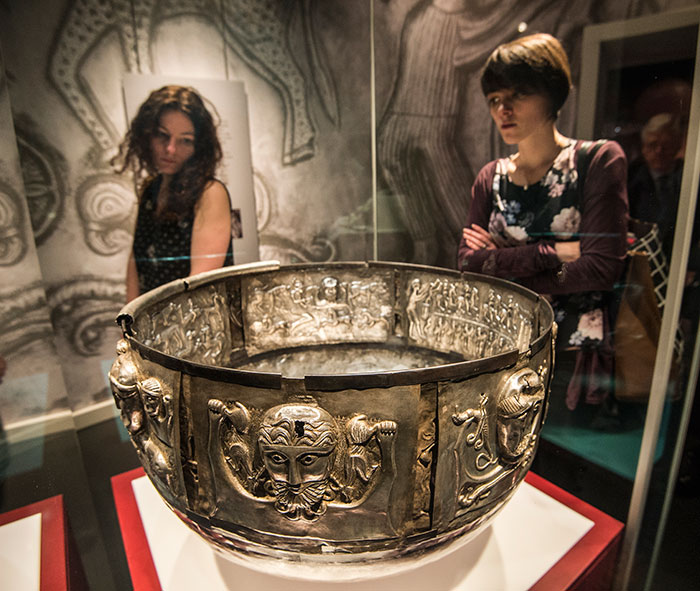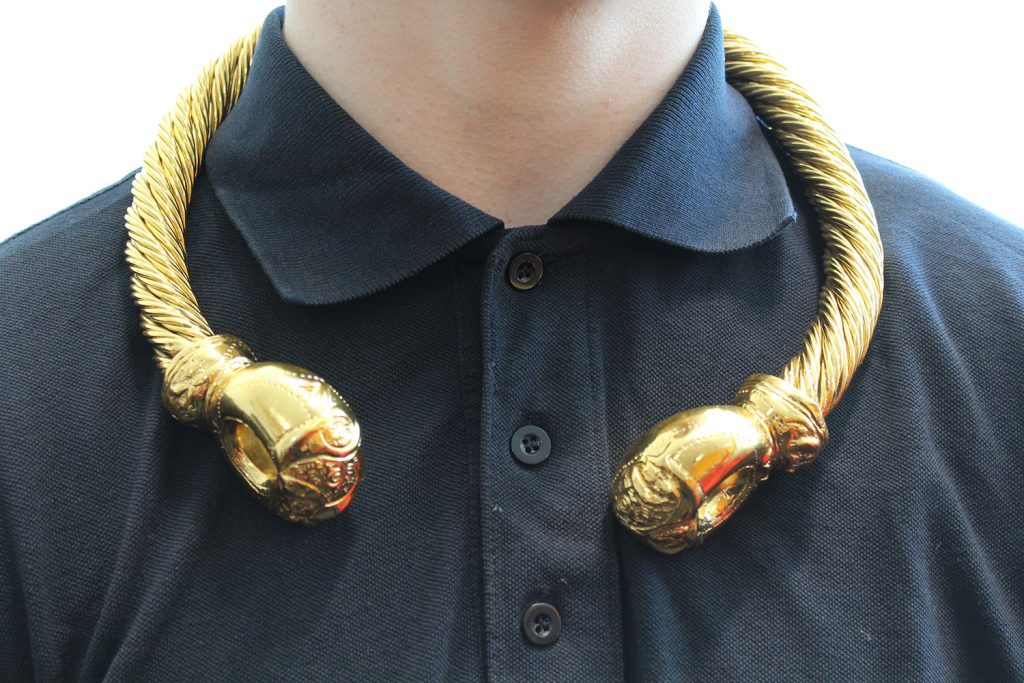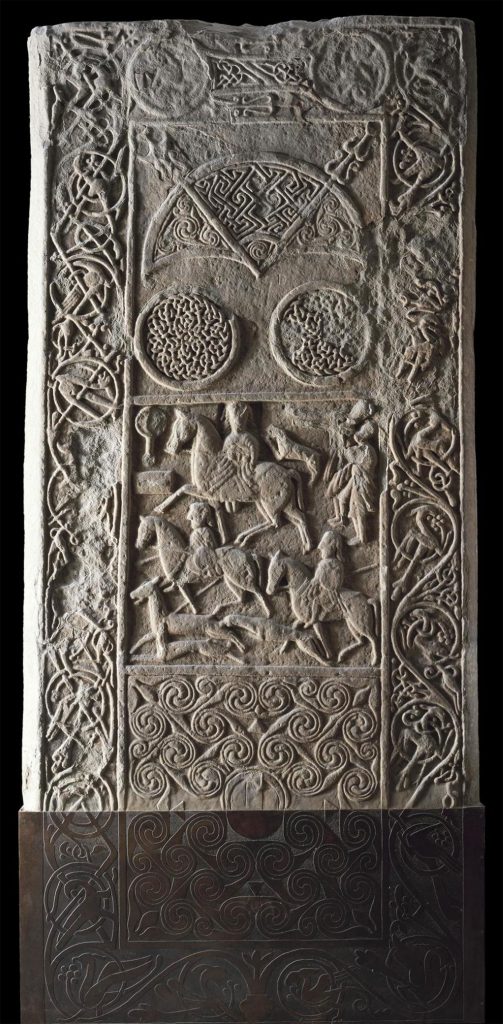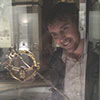Over the course of six weeks, National Museums Scotland has collaborated with Fife College to run a learning course at Polmont Young Offenders Institute, near Falkirk. You can read more about the project about curator Fraser Hunter’s experiences here.
Fraser got the easy job, enthusing about the romance of archaeology and the massive changes caused by the historically clear invasion of the Roman Empire. My task was a little harder – trying to make the historical side of the Celts exhibition interesting to teenage boys, who would find the many names of Early Medieval European peoples confusing and who might not be interested in the conversion of Britain and Ireland to Christianity. However, I discovered that the boys had done some research on the subject with Fife College in their art and history classes in preparation for my visit.

So, I started off by asking them if they knew why we were speaking English now. They didn’t know, but when I asked them what language they thought people spoke back then they guessed that it was different to now. One lad guessed Gaelic and so we talked a little bit about the Celtic languages. This was an encouraging start to some difficult concepts.
We then talked about some familiar names, the English, the Scottish, the British, the Welsh and the Irish, but what really blew their minds was when I showed them a classic Dark Age map with the Scotti in Ireland, the Angles in Germany and told them that the people who the Romans thought of as Britons became the Welsh. They were astounded by this. So I explained how the modern nations that make up the UK trace their historical roots back to this early historical period, but that those countries, as we think of them now, didn’t exist then. They could then understand that this was a time of great change, with the relative stability of the Roman Empire replaced by a politically fractured and tumultuous time.
We talked a bit about history and how it introduces valuable information, but also how it might only present one side of a story, or how there might be two conflicting versions of events. They seemed to pick up on this quite easily and could identify with the idea that history is often written by the winners. When trying to explain the impact of Christianity they could then understand how the new religion was the big winner in Early Medieval Britain and Ireland as, through education and learning, it could then keep the records and chronicles. They really liked the Vikings and the idea that they played by a different set of rules.
After wading through this historical sludge we could then get back to the objects in the exhibition. We looked at how the different motifs of Early Medieval Insular art show the variety of cultural influences coming together immediately after the conversion of most of these islands. They recognised that interlace was a new design of this time and started talking about tattoos – this was a good sign for later.

We had a look at the differences in the way people dressed – Anglo-Saxon men and their belt buckles compared with the brooches of the north and west. This got them thinking about differences between people, especially in how they dress and in different ideas about masculinity. I got them to guess a modern example, distinctive to Scotland, of male dress that some people make the mistake of thinking as feminine – the kilt!

We then moved on to my favourite topic, the Picts. They were intrigued by the idea of the Pictish symbols as a secret code. We then talked about stereotypes of naked tattooed barbarians. I showed them how those stereotypes, originating in Late Roman historical sources have lasted right up to the present day, even in Hollywood films. Keira Knightly proved a momentary distraction, but we then moved on to our final task which involved guessing which tattoos were authentic ‘Celtic’ designs and which were fantasies. The boys were amazing – they could spot the bogus ones easily, but they could also recognise the differences between prehistoric swirly Celtic art and some of the variety of Early Medieval motifs. I had found tattoos that matched objects they had already seen and so this reinforced a lot of the basic concepts, but even some of the tricky examples of modern ‘tribal’ tattoos they could recognise as bogus and suggested Maori or Aztec as influences. It was my turn to be amazed! The whole experience was great and I was really impressed with the learning environment at Polmont and the boys’ willingness to engage with some very difficult concepts.
Celts is a major exhibition, organised in partnership with the British Museum, which unravels the complex story of the different groups who have used or been given the name ‘Celts’ through the extraordinary art objects they made and used. Showing until 25 September http://www.nms.ac.uk/celts
